Should I repot my fiddle leaf fig?
Shawn
7 years ago
Featured Answer
Sort by:Oldest
Comments (13)
Nicole
7 years agoRelated Discussions
At what height should I notch my fiddle leaf fig to branch?
Comments (0)My FLF is about 2.5 feet now, and has a single trunk. I was thinking of notching it to get it to branch, but would I be doing it prematurely? What is a good height to notch your tree at? Ideally I want it to get to 6+ feet, with a nice bushy leaves at the top. Is branching too early a bad thing?...See MoreShould I repot my fiddle leaf fig?
Comments (14)The internet is full of misinformation. These plants grow and will do best under the most intense full sun. Sun through a window is filtered and not anywhere near as intense as it would be outside. The only issue you could ever have is the leaf getting too hot if you’re air is stangnent. If there’s a fan, or even a heat/ac vent in the same room, that’ll keep the air moving enough. It’s a bummer to see everyone coming here with the same “bright indirect” light thing. People misunderstand what that means so they stick it in a dark corner and the plant suffers. Bright, meaning right up in front of a window. Indirect means not outdoors in direct sunlight. Glass filters the sun, hence not direct. That’s only because the plants have been grown under a shade cloth. They can easily handle direct sun if acclimated. All Ficus should be in front of the brightest window in your house. whatmay seem bright or plenty of light to a human is nothing for a plant. Dont water in small amounts. Fully drench the soil till is coming out the drain holes so you’re flushing fertilizer and tap water salts from the soil. Don’t water on a a set schedule. Water only as the plant needs it. This is be different in the summer and winter....See MoreFiddle Leaf Forum
Comments (54)There is a world of difference between repotting and potting up. Repotting is more involved in that it includes removing all (or nearly all) old soil, pruning roots with a focus on problem roots and heavy roots not directly attached to the base of the trunk, and a change of soil. Repotting ensures all stress associated with root congestion is alleviated, while potting up ensures the stress from congestion in the central root mass becomes a forever thing, or at least it becomes a permanent limitation until such time that a pair of human hands gets into the root/soil mass to correct the congestion. Usually, the first step in repotting, after you have assembled what will be needed for the repot, is to saw off the bottom 1/3-2/3 of the root system, then work from there. When I repot, the hose is charged and a tub is available to soak the roots by dipping them into the water-filled tub every minute or two. Typically, when a plant is re[potted for the first time, it can go in a smaller pot or the same pot it was in. What determines proper pot size is your choice of grow media. I use a medium that would allow me to repot a plant from a coffee cup size pot into a 55 gallon drum if I chose to. Water-retentive media demand more critical choices, but there are tricks you can use to limit how much water a planting can hold. Please, if possible, learn to water each plant on an 'as needed' basis. Watering on a schedule is more often than not fraught with problems, Water meters do not measure the soil's moisture content. They measure the electrical conductivity of the soil solution. To verify, pour distilled water into a clean cup, clean the meter's probe, insert it into the distilled water, and note that it reads 'DRY'. Sprinkle a bit of table salt into the water and watch the needle jump to 'WET'. How wet or dry the soil at the top of the soil column is, is pretty much irrelevant. What's important is moisture levels deep in the pot - at the bottom. To monitor moisture levels there, use a 'tell' See "Tell" below. You might be fertilizing too often, but it depends on what you're using and what solution strength you end up applying. Please share that info so we can comment, if you are so inclined. Trees only 'reserve' energy when they are making more food than they need to grow and keep their systems orderly. So, during the winter, your plant will be drawing on its reserves to make up for the energy shortfall due to limited light levels and duration. In most cases, your tree would be at its weakest in early spring, which is why repotting and any heavy pruning should be avoided at that time. You and your tree are currently in the part of the growth cycle that represents the very best time for repotting and any hard pruning - thought you might like to know that. That's sort of an overview. If you have any questions you think I might be able to answer, please ask them. Using a 'tell' Over-watering saps vitality and is one of the most common plant assassins, so learning to avoid it is worth the small effort. Plants make and store their own energy source – photosynthate - (sugar/glucose). Functioning roots need energy to drive their metabolic processes, and in order to get it, they use oxygen to burn (oxidize) their food. From this, we can see that terrestrial plants need plenty of air (oxygen) in the soil to drive root function. Many off-the-shelf soils hold too much water and not enough air to support the kind of root health most growers would like to see; and, a healthy root system is a prerequisite to a healthy plant. Watering in small sips leads to avoid over-watering leads to a residual build-up of dissolved solids (salts) in the soil from tapwater and fertilizer solutions, which limits a plant's ability to absorb water – so watering in sips simply moves us to the other horn of a dilemma. It creates another problem that requires resolution. Better, would be to simply adopt a soil that drains well enough to allow watering to beyond the saturation point, so we're flushing the soil of accumulating dissolved solids whenever we water; this, w/o the plant being forced to pay a tax in the form of reduced vitality, due to prolong periods of soil saturation. Sometimes, though, that's not a course we can immediately steer, which makes controlling how often we water a very important factor. In many cases, we can judge whether or not a planting needs watering by hefting the pot. This is especially true if the pot is made from light material, like plastic, but doesn't work (as) well when the pot is made from heavier material, like clay, or when the size/weight of the pot precludes grabbing it with one hand to judge its weight and gauge the need for water. Fingers stuck an inch or two into the soil work ok for shallow pots, but not for deep pots. Deep pots might have 3 or more inches of soil that feels totally dry, while the lower several inches of the soil is 100% saturated. Obviously, the lack of oxygen in the root zone situation can wreak havoc with root health and cause the loss of a very notable measure of your plant's potential. Inexpensive watering meters don't even measure moisture levels, they measure electrical conductivity. Clean the tip and insert it into a cup of distilled water and witness the fact it reads 'DRY'. One of the most reliable methods of checking a planting's need for water is using a 'tell'. You can use a bamboo skewer in a pinch, but a wooden dowel rod of about 5/16” (75-85mm) would work better. They usually come 48” (120cm) long and can usually be cut in half and serve as a pair. Sharpen all 4 ends in a pencil sharpener and slightly blunt the tip so it's about the diameter of the head on a straight pin. Push the wooden tell deep into the soil. Don't worry, it won't harm the root system. If the plant is quite root-bound, you might need to try several places until you find one where you can push it all the way to the pot's bottom. Leave it a few seconds, then withdraw it and inspect the tip for moisture. For most plantings, withhold water until the tell comes out dry or nearly so. If you see signs of wilting, adjust the interval between waterings so drought stress isn't a recurring issue. Al...See MoreShould I repot my Fiddle Leaf Fig?
Comments (5)A little off the topic, but still valuable info: Plants have natural rhythms, and the one growers should give most consideration to is the growth cycle. During this main cycle or rhythm, the plant will go through changes in the levels of it's stored energy and it's current ability to make energy. Both undeniably will be in the area of 'peak' during the weeks immediately before and after the summer solstice, when light intensity is strongest and duration longest. This is the period during which heavy work like repotting and hard pruning are best tolerated and recovery periods are shortest. Plus, since we all care for plants out of a need to nurture, working WITH the plant's natural rhythms provides us with the satisfaction of knowing we're better nurturers for allowing for strengths and weaknesses. Another practical matter that goes almost entirely w/o consideration is the fact that pruning any time but summer ensures we're removing the growth we want to keep and keeping the growth we should be removing. Summer growth is compact, with short internodes (space between leaves). It ensures maximum leaf/branch density (ramification) and allows us to grow compact and full plants. If we prune now, we remove the 'good growth' and end up keeping the long winter growth. Instead, do your hard pruning in late May, removing all long winter growth. You'll then get a full summers worth of tight growth followed by winters long growth again. Allow the winter growth to remain until the next hard pruning in May, during which you prune back to the tight growth again and start the cycle over. I mentioned this because it's another way of working WITH the plant's natural rhythms instead of against them. ".... do you mean that I should pull the bottom inch of roots off the bottom as in loosen them up or actually remove them? And should the vertical slits be just through the roots circling the outside or deeper? You can pull them off or cut them off with a scissors. Removing the bottom half of the root mass is almost always my first step in the repotting process, but because of timing, you'd want to fall far short of a full repot. A VERY healthy root system with the entire soil mass fully colonized with fine roots: This ^^^ is much more than you want to remove, but it gives you an idea of what you'll be doing. If you look at the root mass on the left, you'll see an extra measure of root congestion near the bottom. If you pull at this with your fingers, you'll find there is a natural point of separation, meaning the heavily congested roots will pull away from the less congested roots and sort of decide for you how much to remove. Then, cut the vertical slits 3/4-1" deep in the remaining root mass. If you want, you can snip any loose/hanging roots from the bottom before you settle the plants in a new pot, but it's not necessary - just neater. The larger pot should allow for an inch or two of soil at the bottom and maybe an inch all around the sides of the pot. Al...See MoreNicole
7 years agolitterbuggy (z7b, Utah)
7 years agolast modified: 7 years agolitterbuggy (z7b, Utah)
7 years agoShawn
7 years agolitterbuggy (z7b, Utah)
7 years agoDave
7 years agoShawn
7 years agoDave
7 years agoShawn
7 years agoDave
7 years agolitterbuggy (z7b, Utah)
7 years ago
Related Stories
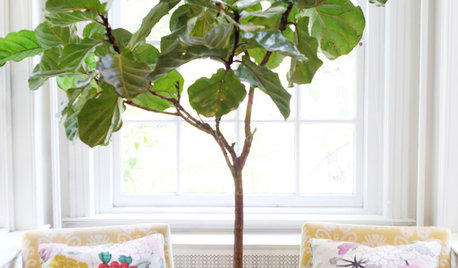
HOUSEPLANTSPlay Up Some Fiddleleaf Figs for a Lively Indoor Tune
Strike a dramatic chord in a minimalist scene or a country note in a rustic setting — fiddleleaf fig plants harmonize with any style
Full Story
HOUSEPLANTSSee How Fiddleleaf Fig Trees Can Liven Up Your Decor
The tropical houseplant with big green leaves adds a cheerful and striking design element to rooms
Full Story
DECORATING GUIDESThe Dumbest Decorating Decisions I’ve Ever Made
Caution: Do not try these at home
Full Story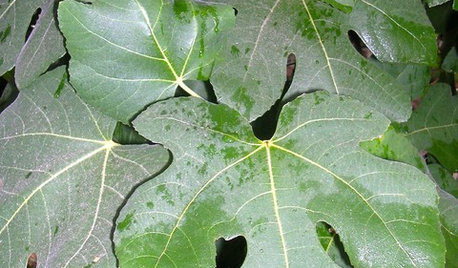
GARDENING GUIDESGreat Design Plant: Common Fig
A full form and delicious fruits make this Middle Eastern tree a favorite in gardens around the world
Full Story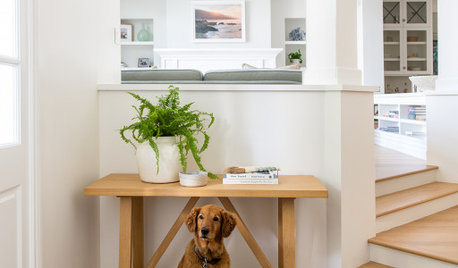
CONTAINER GARDENSConsider These 10 Pet-Safe Houseplants
Help keep cats and dogs healthy with the right selection of indoor plants
Full Story
DECORATING GUIDES12 Smart Ideas for Decorating Empty Corners
Fill a neglected corner with something useful, attractive or both, using these dozen thoughtful decorating strategies
Full Story
DECORATING GUIDESDitch the Rules but Keep Some Tools
Be fearless, but follow some basic decorating strategies to achieve the best results
Full Story
PRODUCT PICKSGuest Picks: Decorating Solutions for the Stylish Renter
Look to removable wallpaper, appliance covers and easily changed hardware for the answers to decorating woes in a rental
Full Story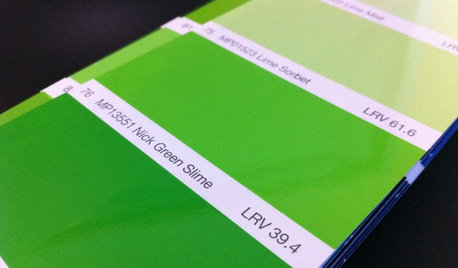
DECORATING GUIDESFrom Queasy Colors to Killer Tables: Your Worst Decorating Mistakes
Houzzers spill the beans about buying blunders, painting problems and DIY disasters
Full Story
MY HOUZZMy Houzz: Japanese Minimalism Blends With Classic New Orleans Style
African art and indoor plants complement the clean and modern aesthetic of two landscape architects
Full Story


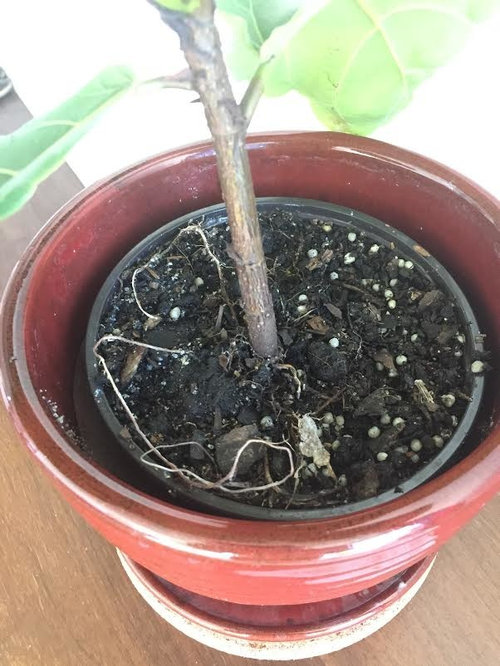
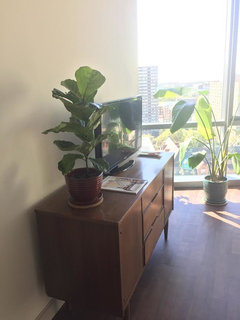

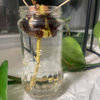
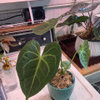

Dave